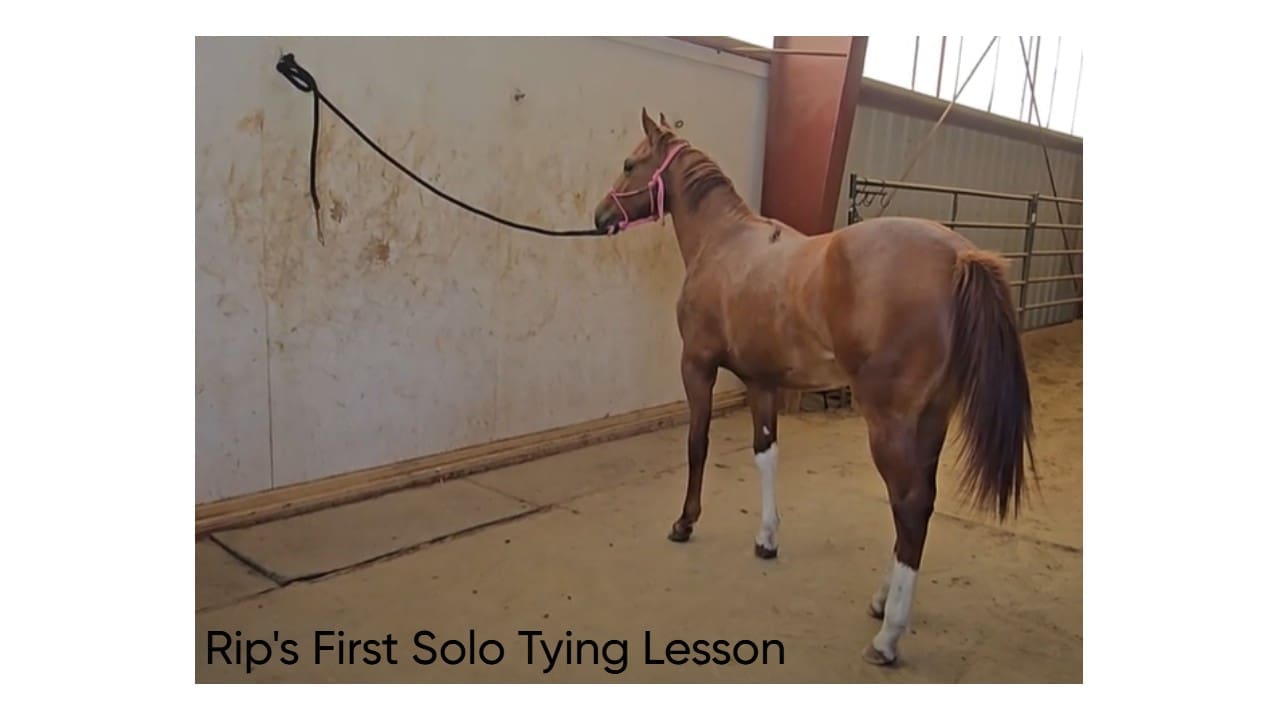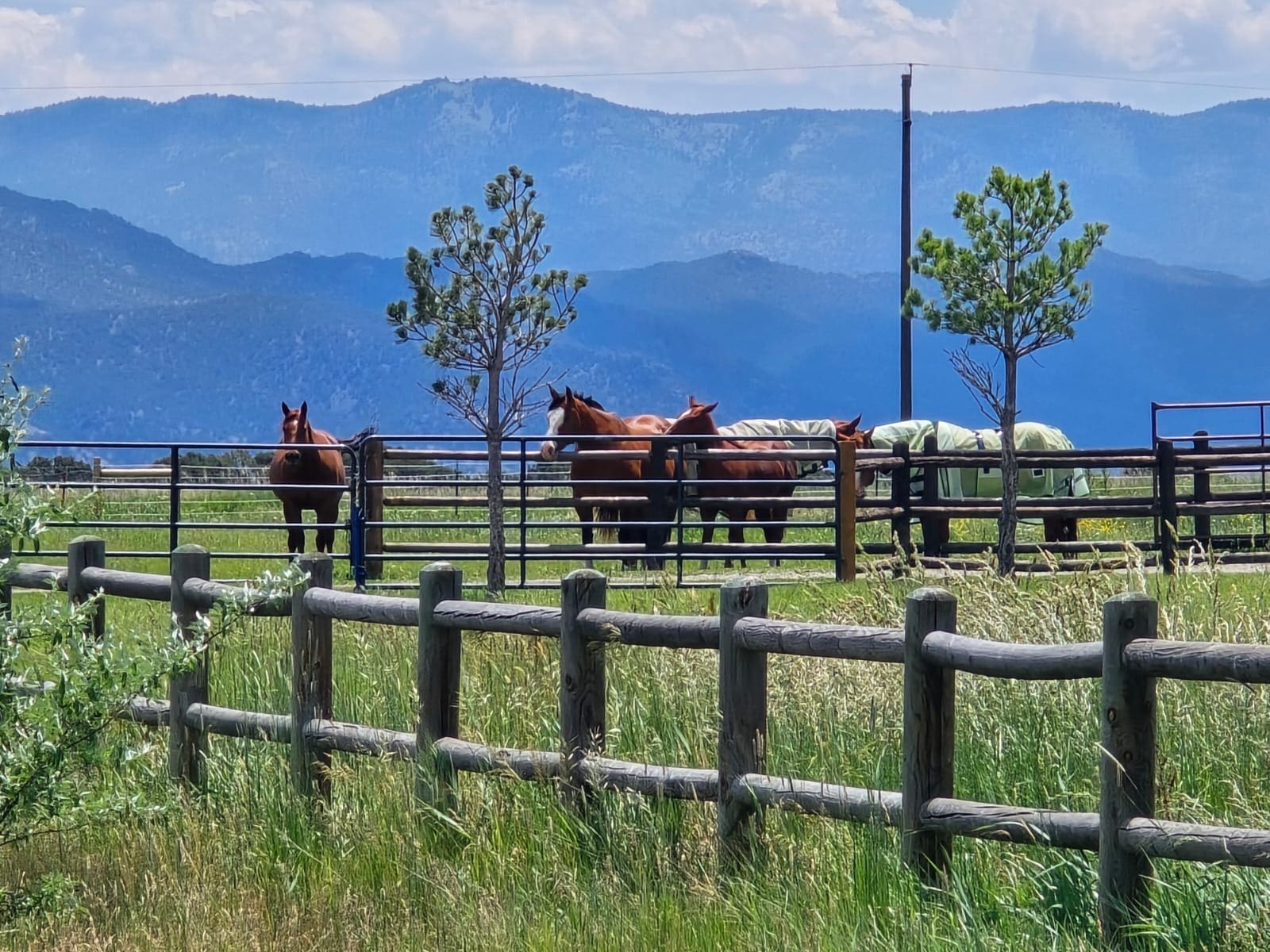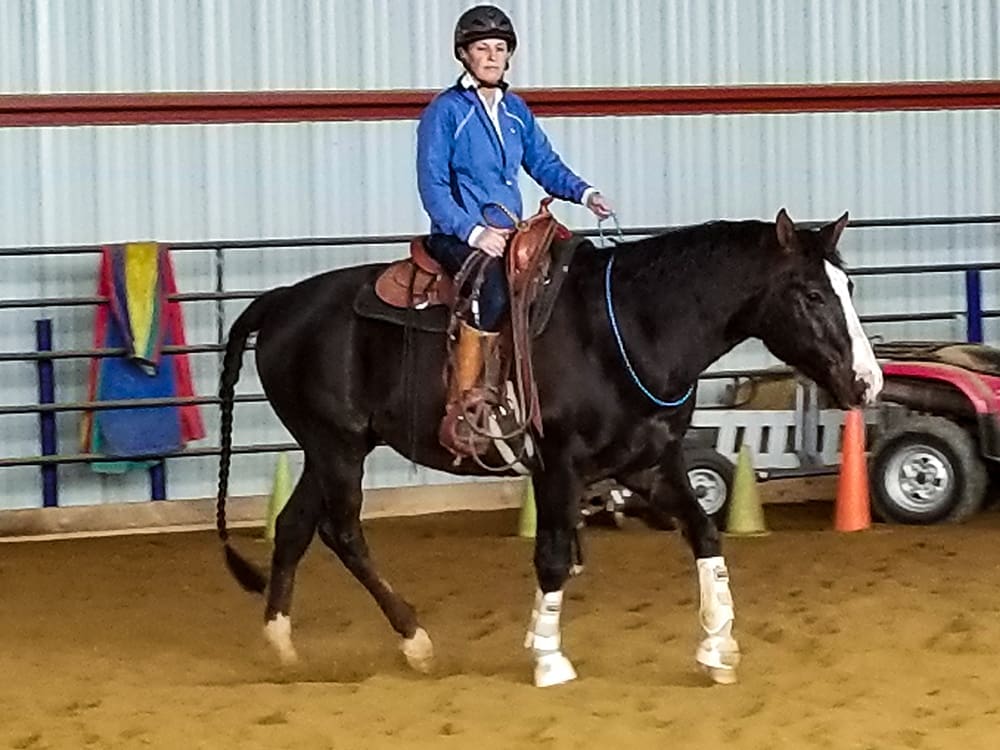One only needs to look at the horse’s enduring prevalence in human society or the rapid rate at which feral horse herds over-populate, as evidence of the fact that horses have always managed reproduction quite easily, with little intervention from mankind.
With my mare Annie due to deliver any day now, I’ve been thinking a lot about how exciting it will be to have a newborn foal running about. All the prep work has been done; the stall is ready, the foaling kit is laid out, and my vet is on standby. It’s all over, but the waiting and the anticipation. As I write this, Annie is already five days overdue, without any overt signs of imminent foaling present.
Fun Fact: Did you know that longer gestations are often associated with colts, while shorter gestations usually indicate fillies? *Fingers crossed!*
Foals are quite delicate when they are born, but they grow bigger and stronger minute by minute. You can literally watch them grow. But from the moment of birth through the first week of life, it’s important that a neonatal foal reaches certain milestones and that its development is managed appropriately.
There are many variabilities and eventualities that will dictate how this foal’s life will unfold, but from the moment of birth through the first week of life, the foal’s path is foreseeable. Once that mare gives birth, the process becomes highly predictable, and the concerns are simple.
From labor to delivery, from the foal coming to life and bonding with the mare, to learning how to negotiate life outside the womb, it usually goes like clockwork. It’s not to say that things never go wrong—our main job in this process is to notice if something is amiss. But for the most part, if you understand what a normal birth and normal milestones are in that first week of life, all you have to do is sit back and watch that baby thrive.
Stages of Labor
The way mares give birth is nothing like humans, so bear that in mind. With a very long gestation period (roughly 11 months), we start seeing early warning signs a few weeks before she goes into labor—her milk bag starts filling, the foal will shift into birthing position, the muscles around her rear-end begin to soften, or loosen up. As she gets closer, her bag is full, her teats produce a waxy substance, and she may start dripping milk.
At this point, the milk can be tested for pH levels that will indicate if labor is imminent. That’s the normal progression leading up to labor and delivery. Or the mare could surprise you and have that foal without showing any warning signs, but that’s uncommon.
A mare’s labor goes through three stages:
Stage 1: She becomes uncomfortable with contractions, and she may show signs of discomfort, similar to colic: swishing tail, stomping, looking at her stomach, lying down and getting up, pacing, and sweating. This stage will only last thirty minutes to a few hours. Once it’s obvious she’s in labor, I will wash her bottom, wrap her tail, and fluff up her stall, to help keep things sanitary.
Stage 2: The foal delivery is surprisingly quick and relatively easy. Once her water breaks, the mare will lay down, and the baby dives head-first onto a thick mattress of straw (usually within about 20 minutes). That’s when the fun begins for any humans in attendance, but the mare’s labor is not over yet.
Stage 3: The mare delivers the huge placenta. After a brief rest and some bonding time with her foal, the mare’s contractions begin again. She will probably stand up at this point, causing the umbilical cord to break. Since the placenta will be partially hanging outside her, I’ll tie it up so that she doesn’t step on it. It’s important to capture the placenta when it is delivered, to make certain it is intact.
If the placenta is not delivered promptly and entirely, the mare can face serious infection. It can take up to three hours for the placenta to be delivered, and it creates a big mess if it’s not managed well!
Knowing these stages and what to watch out for makes preparing for and being present for the birth easier.
The Foal Hits the Ground Running!
Once the water breaks, things happen fast. As the person attending the birth, my job gets serious—not because my intervention will be required, but to make sure things progress normally. While the overwhelming majority of foal births would go just fine without anyone in attendance, I’ve got a lot invested in this baby, and I’m not leaving anything to chance.
Once the mare lays down to push, the first thing I want to see emerging is a white membrane—the white sack is the first green light for a smooth delivery. Chances of that are slim, but if the sack covering the foal is red, it’s an emergency.
The next green light is to see two front feet and a nose coming out of the birth canal. That tells me the foal is in position to slip right out. Up until now, I’ve been quietly sitting in a corner of the stall or just outside, trying not to disturb the mare.
At this point, I may quietly sneak in, pull the sack away from the foal’s nostrils and make sure its airway is clear. The foal should start breathing immediately at a fast rate of 60-80 breaths per minute for the first 30 minutes, and then dropping to 30-40 breaths per minute.
I want to keep a very low profile here, so as not to stress the mare, disrupt the critical bonding between mare and foal, or confuse the foal with unnatural stimuli. Mares will typically lick their foals dry, stimulating the foal as they develop a strong bond.
Mainly, I want to make sure the foal gets out of that wet sack, gets dried off, and doesn’t get too cold. It’s possible that all of that will happen without my help, but I’ll stand by ready to dry the foal and/or put a wool sweater on him if needed.
When the mare stands up, the umbilical cord usually breaks. At this point, I will jump in and briefly hold the foal still in order to dip its umbilical stump into a dip cup, pre-filled with antiseptic. I’ll get in and out quickly, without too much drama, but it is an important precaution to prevent infection.
In the first few hours of a foal’s life, there are a few critical milestones that must be reached for the foal to survive and thrive. This is commonly known as the “1-2-3 Rule.”
The foal should stand up within 1 hour.
The foal should be nursing within 2 hours.
The placenta should be delivered (intact) within 3 hours.
Now, my most important jobs are watching to make sure the foal stands, nurses, swallows, and passes the meconium stool. Once these milestones are met, the foal thrives. If there are delays beyond the 1-2-3 rule, things can go downhill fast.
During this time, I will observe closely, watch the time, and make notes, but stay out of the way as much as possible. Although the temptation is great to get your hands on that baby, to help it stand, or find the milk, it’s best to let nature take its course. The newborn foal’s instinctive drives are strong, as are the mare’s, and I don’t want to interfere or confuse their good instincts.
During delivery and immediately after, I also observe the mare’s behavior—especially if it’s her first foal. It’s rare, but sometimes mares will fear the foal, be reluctant to let the foal nurse, be overprotective (aggressive), fail to bond, or even outright reject the foal. With any of these abnormalities, I would immediately have to intervene to make sure the foal is safe and gets the critical nutrition it needs in its first few hours of life.

First Day of Life
I’ll go on record as saying that I am not a fan of foal “imprinting,” or desensitizing the newborn foal. I think it’s unnatural, unnecessary, and potentially harmful. I may rub the foal dry right after birth if it’s cold or seems to be lacking vitality. Within the first 24 hours, I’ll start holding the foal still momentarily so that it starts getting accustomed to some level of restraint while it’s still small enough for me to hold it still.
My new foal will have its first veterinary exam within 12 to 24 hours of birth. I will keep Dr. Brock posted when Annie goes into labor, and she will come the next day to check the foal’s vital signs and vitality, inspect the placenta, and draw blood for an important test of the foal’s immune system. It’s called a “snap” test and tells you right away if immunity was passed from the mare to the foal through the colostrum, and if its antibody levels are sufficient.
The foal will probably spend its first day cooped up in a stall to make sure it’s fully bonded with the mare and is getting the rest and nutrition it needs to meet the rapid growth rate of the first week. Foals sleep a lot at first, so I want to be sure it’s dry and safe when it needs to nap. Young foals are notorious for lying down next to a fence, then rolling over and waking up on the other side of the fence. The foaling stall is the safest nursery for the first 24 hours, and it allows the mare to get rest, too.
We’ve had a lot of late-season snow and mud, but weather permitting, we’ll turn Annie and her foal into an outdoor pen by day two. While gradually expanding its world, we’ll watch to make sure the foal stays close to mom, listens to mom, and seeks her company when it gets scared.
First Week of Life
As we move the mare and foal from stall to turnout, one person will lead the mare, while the other pretends to lead the foal. We’ll introduce the foal halter (which only fits for about two weeks), but primarily, we’ll manage the foal by hugging its body and directing it as needed.
It’s important to never pull on the lead rope, because its head and neck aren’t strong enough for that yet. It’s “pretend” leading because the foal is mostly following the mare around, but we slowly get the foal used to walking beside a human.
Let me be clear: I am not “halter breaking” the foal. I am simply establishing patterns and routines. There will be plenty of time for training in the coming months and years.
It’s important for the foal to get plenty of fresh air, sunshine, exercise, and enrichment as it rapidly grows, learns and develops more coordination. We will gradually introduce the mare and foal into larger turnouts to let the foal learn to navigate different terrain, and most importantly, learn to stay with his mom and keep out of trouble.
By the end of its first week of life, the foal has drastically changed from that fragile blob it was at birth. It’s visibly bigger and stronger, and learning about its world at a stunning rate. While I want the foal to get used to being touched, having its legs handled, and learning to be restrained, I don’t want to over-handle or over-stimulate the foal either.
The Big Introduction
At this point, we are thinking about introducing the mare and foal into the herd. In a perfect world, that turnout would be with other mares and foals (who tend to share nanny duties), but we only have one mare. Geldings (and sometimes barren mares) can get quite jealous over foals, and will sometimes try to steal them away from the mare. This can be dangerous for the foal, so we will highly manage this introduction to the herd.
My husband’s horse, Casper, is very bonded with Annie, so I will introduce the foal to Casper first. Hopefully, Casper will step up as a protector of Annie and the foal, which will make the introduction to the other geldings go smoother.
Welcome to the Rest of Your Life, Baby!
After a week or two, the foal is learning to negotiate its world, find its food, run with the herd, and avoid danger. It’s learning, making friends, exploring, playing, and frolicking in the green grass.
There’s not much to accomplish during this time, other than to enjoy watching the young foal grow—and prevent it from developing bad habits like putting its mouth on you, crowding you, pulling away from you, or leaning on you.
I want the foal to learn some minimal handling skills—catch, halter, lead, handle legs, pick up feet, and tolerate occasional constraints. Hopefully, none of those skills will be needed for a while, but you never know. Injury, sickness, hauling the horses to the vet, or other unplanned incidents may require handling the foal. Developing these minimal handling skills over time, with brief, routine handling is enough to properly habituate the foal.
Mares have been foaling for tens of thousands of years, and for the most part, it goes according to plan. But the more you know, the greater your confidence will be, and the less likely things are to go wrong. I’m ready. Bring it on!
Anyone who has had the thrill of watching a horse be born will agree that it is one of the most amazing events you could ever witness. Seeing that wet blob come to life, learn to stand, take its first few steps, instinctively search vertical surfaces until it finds its food source, walk, trot, gallop, and cling to its mother to stay safe, is nothing short of amazing. All in less time than it takes to watch a feature-length movie!
Now, let’s just hope everything goes according to plan with Annie! As much as I joke about wanting a colt, I’ll be thrilled with any foal that’s healthy and strong.




